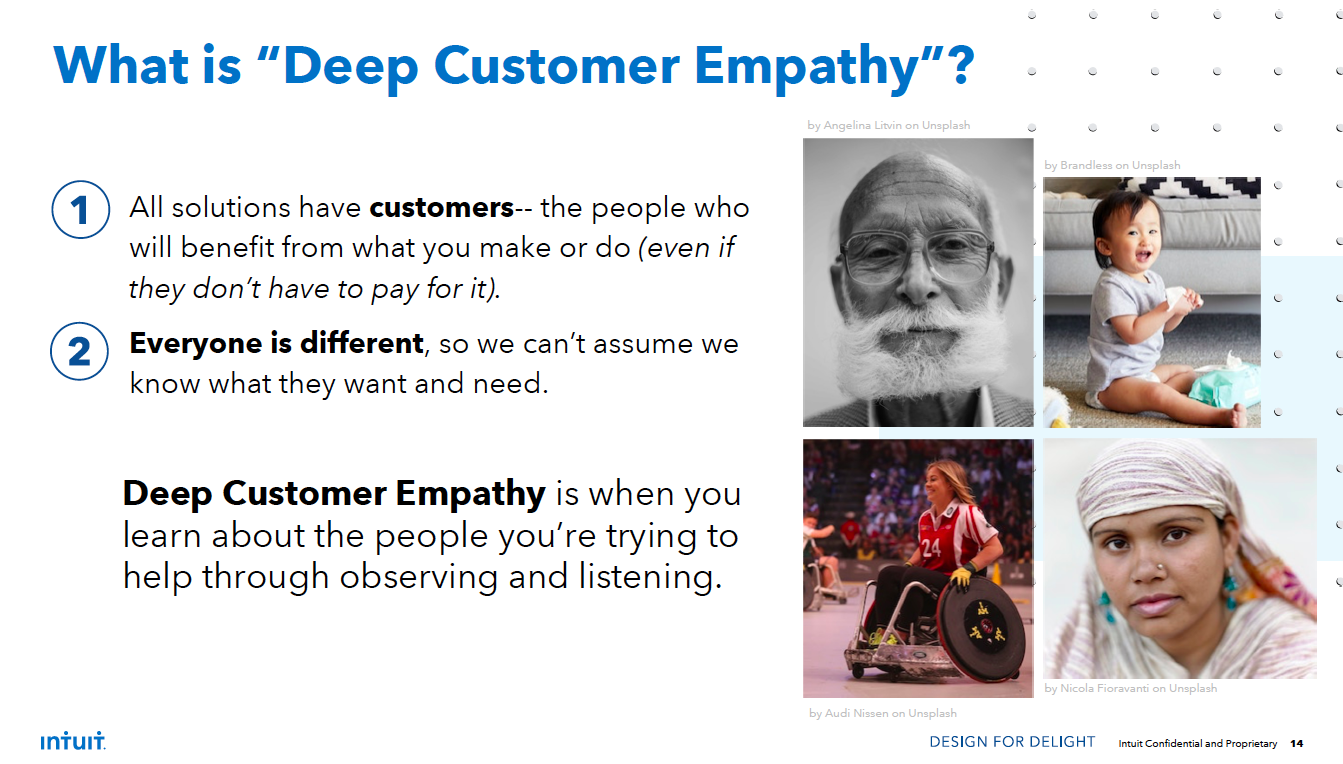4 Ways to Use Design Thinking in your English Classroom
4 Ways to Use Design Thinking in your English Classroom
This blog post is sponsored by Intuit
If you’re new to the Design Thinking approach, you’re not alone. Design Thinking has been around for a while and widely utilized by corporations and businesses, but discussions about its power in the education sphere have been relatively quiet. I like to think of Design Thinking as Problem/Solution thinking -- a foundational part of building a classroom dedicated to critical thinking.
Intuit the makers of QuickBooks, TurboTax and Mint, have put together an incredibly useful (and free!) resource to help teachers get started with design thinking in their own classrooms - the Design for Delight Toolkit. The toolkit is designed to help teachers teach students the basics of design thinking in an interactive, problem-solution format. The toolkit can be used by any teacher whether in classroom or virtual. Not only are the materials ready to go for presenting on the teacher’s side, but each worksheet can be uploaded and used with the extension KAMI to mark up and even sketchnote on the PDF. Use breakout rooms in Google Meetes or Zoom for students to discuss the big questions presented and start the process of design thinking with a little collaboration.
1. Research
When developing research projects for students, this approach is incredibly powerful. In the initial stages of your research project, have students begin with identifying problems. These could be problems related to social injustice, life as a teenager, or even issues that they find in social media. Whatever the scope of the research might be, starting with the problem naturally focuses the research. Then, through the brainstorming process, ask students to list possible solutions to research. The Design for Delight Toolkit comes in handy here, as many lessons are created for teachers to implement right away. Rapid experiments and partner interviews are just a few of the engaging and fun lessons that the toolkit provides that you can implement right away.
2. Fiction
Romeo has a problem: a seemingly incurable love sickness. Daisy has a problem: an unwillingness to do the right thing and pathetic lack of a spine. Fictional characters across the cannon and contemporary texts face problems and conflicts all day long. Why not apply Design Thinking to their issues? What could a solution to Romeo or Daisy’s problem look like? What could work? What would be disastrous? The critical thinking required for these kinds of conversations, whether through a socratic seminar or through writing, are the kinds of lessons that grow our students. This is not fact or plot recall - this is critical thinking.
3. Rhetorical Analysis
Intuit’s Design for Delight Toolkit is also nicely lined up with rhetorical analysis lessons as well. As we work through speeches and commercials, I’m constantly asking my students “Who is the speaker? What is her purpose? Who is her audience? How does she go about convincing that audience of what she’s trying to say?” Thinking about audiences as customers and the process of building rhetoric dovetailing with understanding the concept of “deep customer empathy” are a natural fit. Design thinking can help students look at the engineering of an argument and in the way a product is being pitched to an audience.
4. Project Based Learning
Similar to research papers, project based learning and passion projects are another place to instill the design thinking mindset. The toolkit provides easy lessons to help students start the brainstorming process, worksheets, and supplemental posters and collaboration tools. In my most beloved passion project, Be the Change, students begin the process by selecting an “issue” that they care about. In design thinking, students would instead start by brainstorming a huge variety of problems that they see in the world, and from there, selecting the problem for which they can help find a solution. As an English teacher, this gives me a clear and helpful way to show students what belongs in the introduction of the writing or project (the problem) and a clear line of reasoning all the way down to the conclusion (the solution).
No matter how you are including college readiness into your curriculum, know that the work you’re doing is important. I’d love to hear about your experience with teaching design thinking in your classroom in the comments below!


